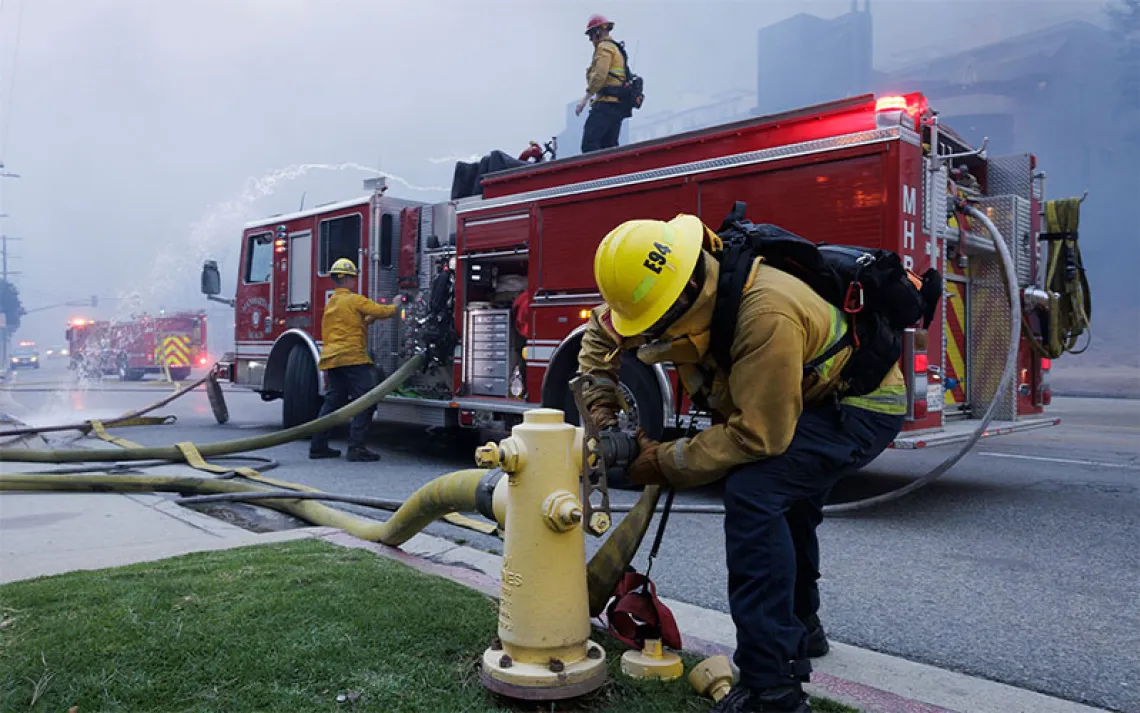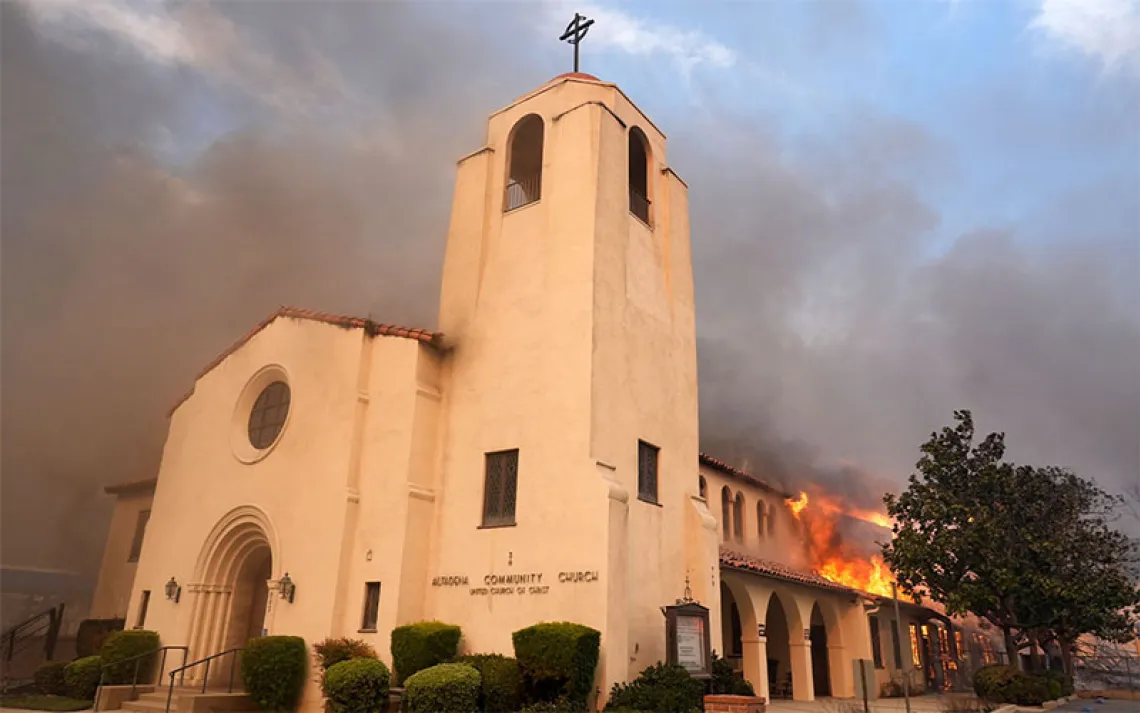Private Landowners Are the Missing Link for Prescribed Burns
Community organizations teach individuals to manage their land with fire in states like Georgia, where 93 percent of the land is privately owned
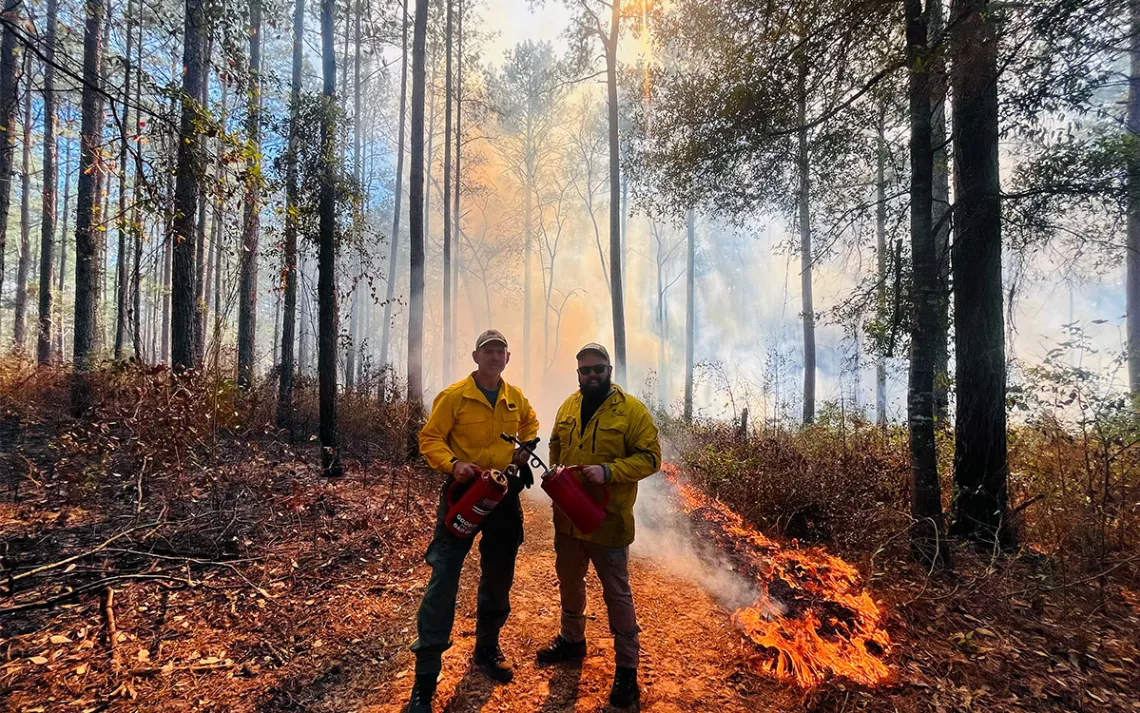
Southwest Georgia Prescribed Burn Association president Tom Reid (left) and coordinator George Jensen (right) are trained to use drip torches full of diesel and gasoline to set controlled burns for maintaining healthy forests. Reid and Jensen train others in their community to do the same. | Photo courtesy of George Jensen and Anna Gage Norton Photography
The beginning of 2024 ushered in the perfect weather for a controlled forest fire in southwest Georgia: Mid-level humidity would stop the fire from permeating deep into the ground, and a steady wind would encourage the flames while moving their smoke up and out of the area. So on January 1, Tom Reid called the Georgia Forestry Commission and secured the state’s first burn permit of the year. The permit allowed him to start a fire on nine acres of his family property in Thomasville, Georgia, as a way of maintaining the land—something that’s become a retirement project for him.
The burn itself took four hours. Reid and his wife “dropped fire” together, pouring flames from the lit tip of a drip torch full of diesel and gasoline in a series of strategic lines to create heat. The lines merged together, pulling the smoke inward. The flames crept through the hardwoods and vines Reid wanted to eliminate, never scorching the loblolly pines above. Just hours later, when Reid came back to ensure the small patches of remaining fire were smoldering under control, birds were already flocking to the area to snack on insects and seeds.
After the burn, sunlight filtered through the pines down to the ground, still black with char. Although the property has seen fire for generations, Reid started carrying out prescribed burns himself only about a year ago.
“To make a long story short, I fell in love with it,” he says. When he came back to Georgia in 2018 after decades in Los Angeles, Reid followed along on burns led by a forester. He started asking questions about the process and grew interested in being able to manage a fire on his own, and teaching others to do the same. Now, he’s the president of the Southwest Georgia Prescribed Burn Association (PBA), which brings together people from across the region to share knowledge, tools, and time in service of prescribed fire. “I just think it’s so valuable to the property, to the land everywhere,” Reid says.
The benefits of prescribed fire—the controlled, intentional application of fire to a specific area—are wide-ranging. Most landscapes on earth regularly burned in the past, and many have plant and animal species that depend on fire to thrive. Before humans, lightning strikes would spark fires. Then, Indigenous people set controlled burns. But by the early 1900s, the recently created United States Forest Service labeled fire as a threat, and suppression became national policy. Without routine fire, though, the landscape changes: Species that don’t depend on fire replace the ones that do. There is also an accumulation of “fuels”: plant matter that can easily catch and spark a much larger, more catastrophic burn like the recent fires in the western United States and Canada.
Reid approaches burns on the property like a massive checkerboard, working in alternating small sections. The difference between the recently burned plots and ones that haven’t seen fire in years is striking. In the burned acres, the thin green crowns of pines make up the overstory, the highest canopy of foliage, with tall silver plume grass swaying below. It’s easy for people to walk among the trees; so can turkeys, deer, quail, and other local wildlife.
The plots that haven’t been burned are inaccessible. They are overgrown with plant life, full of fire-resistant oaks, sweet gum trees, and brambles. Reid calls these areas “the jungle.” They’ll get a controlled burn soon, but Reid won’t take care of them alone—they’ll be the setting for a Southwest Georgia PBA “learn to burn” event.
“One of the biggest problems facing this forest is lack of communication,” Reid says. So one of his primary goals with the PBA is to get neighbors talking to one another. At the event, members will come out to his property and get hands-on experience carrying a drip torch and starting a fire. They’ll also learn key information such as determining when to start a burn and how to mop up after it’s complete.
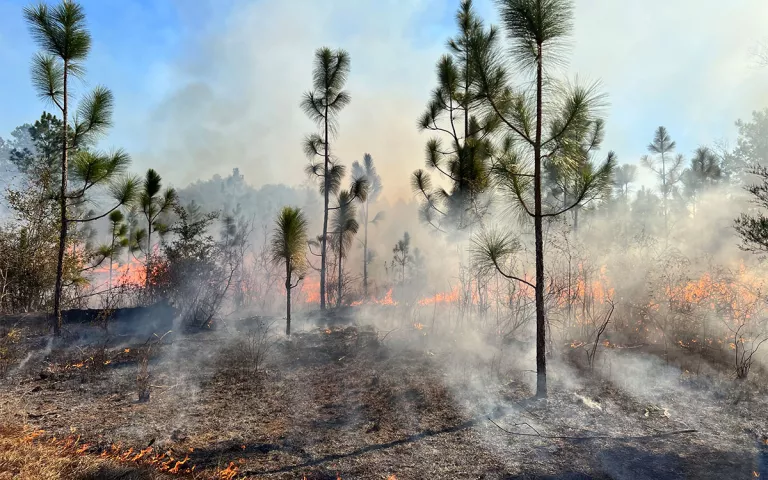
In early 2023, a “learn to burn” event with the Southwest Georgia Prescribed Burn Association cleared out competition for young longleaf pine trees on the private Nortons on Notchaway property. | Photo courtesy of George Jensen and Anna Gage Norton Photography
Prescribed burn associations originated in the Great Plains in the 1990s, when neighbors came together to burn swaths of rangeland for agriculture and to control invasive species. The first ones were established in Nebraska, Texas, and Oklahoma and quickly expanded in the region as landowners realized that sharing equipment, labor, and training opportunities helped them overcome challenges in managing their land.
With climate change, that kind of access is more important than ever. Certain conditions, especially related to moisture in the ground, are ideal for burning: too damp and a fire won’t keep burning; too dry and it risks escaping the boundaries of the planned burn. The windows of opportunity to burn are shrinking because of rising temperatures, decreasing humidity, and major droughts that can be followed by brief, intense rainfall, says Jennifer Fawcett, who coordinates a prescribed-fire working group for the Southeast Regional Partnership for Planning and Sustainability—an alliance of state and federal agencies. But if the conditions are just right for a brief window on a weekday afternoon, the nimbleness of a PBA means neighbors can call one another and quickly pull together a group of people for a burn. It’s something neither state nor federal agencies can match.
The Southwest Georgia PBA officially launched in January 2023. Anyone who owns property in the service area, which covers 18 counties in one of the most rural parts of the United States, is eligible to join. The 80 current members get access to the PBA’s network and their knowledge, as well as workshops on related topics and shared tools such as the Burn Trailer, which comes stocked with everything needed to safely start and clean up a prescribed fire.
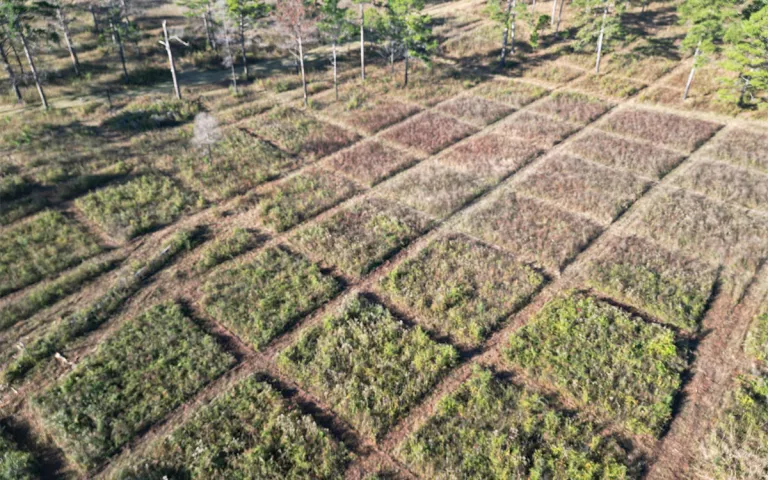
Mowing lines into land—known as “blocking” or “block mowing”—keeps undesirable hardwoods at bay and allows the flourishing of grasses that wildlife forage. | Photo courtesy of George Jensen and Anna Gage Norton Photography
Locally rooted organizations like PBAs are a key link, both to create continuous corridors of burned land for animals to travel through and to normalize prescribed fire. The majority of US land is privately owned—overwhelmingly so in the South, at about 80 percent. Even in this region, Georgia stands out, with 93 percent of its land privatized, putting it in the top 10 nationwide. Without involving those landowners, there’s no way to burn the acreage needed to keep the state’s land healthy.
There’s always a backlog of land that needs to be burned, but the southeastern United States does better than most of the rest of the country: Overall it accounts for 70 percent of prescribed fires in the nation. Thomas County, where Reid’s family property sits, burns more acres in a single year than the entire state of Wisconsin does in five.
In part, that may be because the South, as Southerners like to say, never lost its culture of fire. Today’s organized PBAs are just the latest iteration of it. When the US Forest Service banned prescribed burns in the 1920s, the land managers of quail hunting preserves—many of which were privately owned former plantations—saw a decline in the populations of these ground-nesting birds. In the 1950s, the owner of one of these properties, Tall Timbers, brought naturalist Herbert Stoddard in to study how to bring the quail back. The answer, Stoddard found, was reintroducing fire. Tall Timbers—in Tallahassee, Florida, just south of Thomasville—is now widely considered the birthplace of research-driven fire ecology and a national leader in prescribed fire.
“This is the basket of prescribed fire in the United States,” says George Jensen, the Southwest Georgia PBA coordinator for Tall Timbers. Jensen, who calls himself “33 percent politician, 33 percent teacher, 33 percent burner,” is the liaison with the Georgia Department of Natural Resources, the instructor for learn-to-burn events, and often on the ground with landowners as they apply fire to their property.
A self-described “extroverted dude,” he talks to people about prescribed fire while he’s waiting in line at the post office or eating at his neighborhood Mexican restaurant. The PBA’s members, he says, do the same.
What really keeps fire part of the neighborhood culture, says Jensen, is “when people that are local start to put the words ‘prescribed fire’ in the ears of their neighbors.”
Over the past decade, the number of PBAs across the country has expanded from 62 in eight states in 2015 to 130 in 19 states today. Most are concentrated in the Great Plains, California, and the Southeast. Their rapid spread is partially because catastrophic wildfires have led to an increased awareness of the need for controlled burns, says Fawcett, the prescribed-fire working group coordinator.
“They all have a common goal, and they all realize that more fire is needed on private lands—and that they have the ability to do that,” she says.
Some PBAs are networked at the state level, such as those in California, or at the regional level, as in the Great Plains. As the number of organizations grows, there’s now a possibility of coordinating a national network. Fawcett has hundreds of results from the first national survey to better understand how they operate, who their members are, and how many acres they are burning. That information, in turn, could help interlink efforts across state lines.
 The Magazine of The Sierra Club
The Magazine of The Sierra Club


